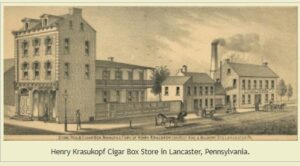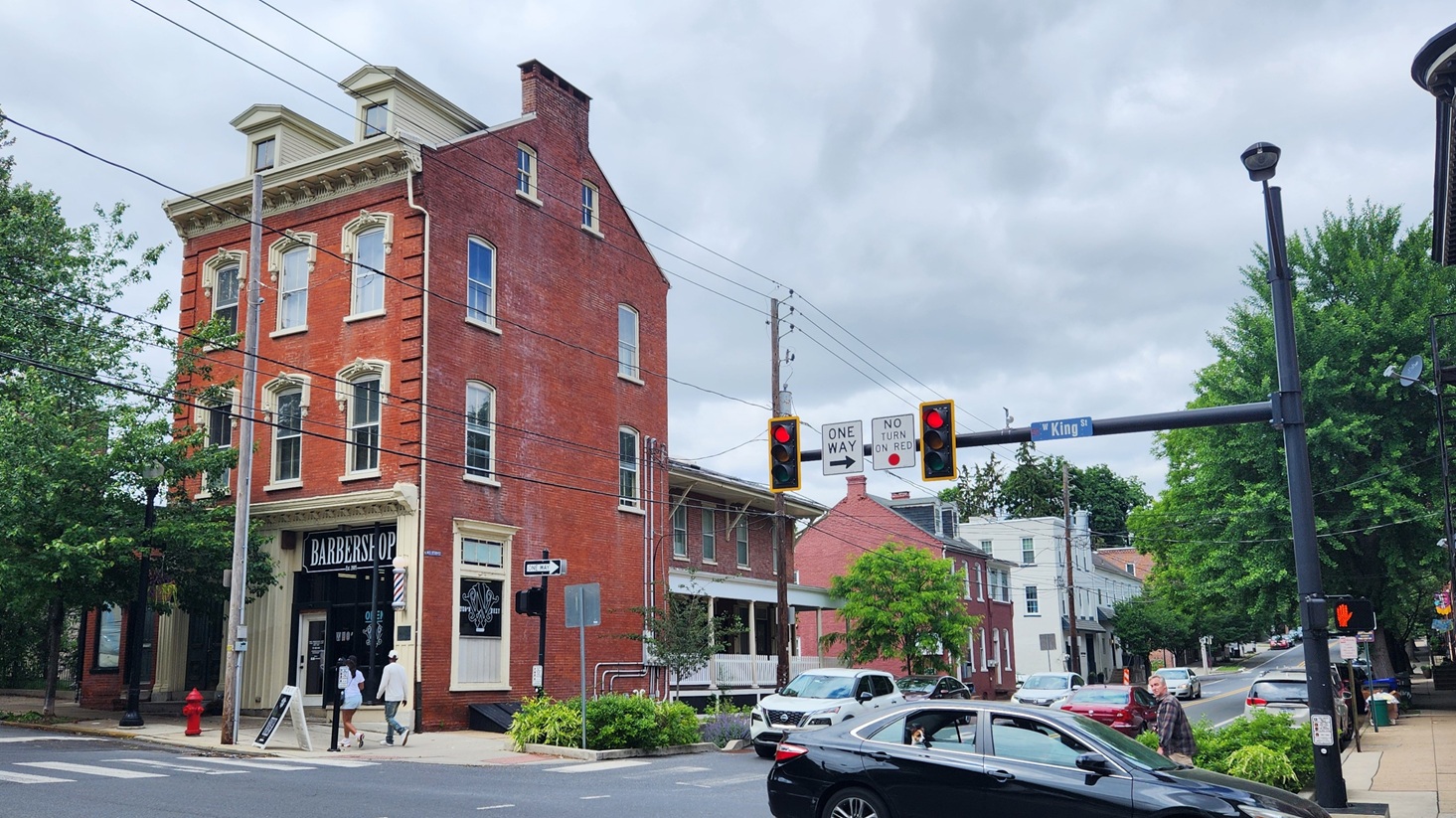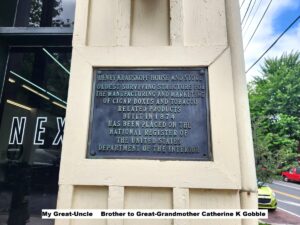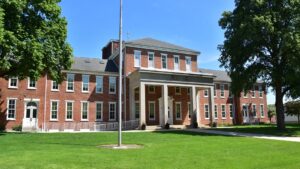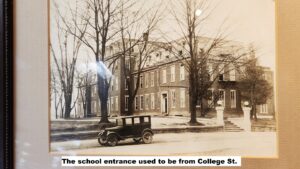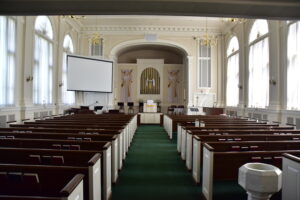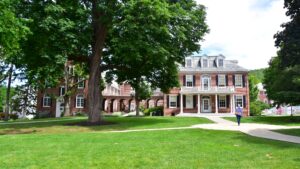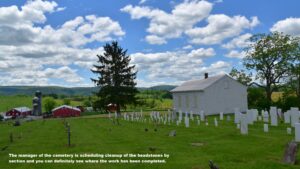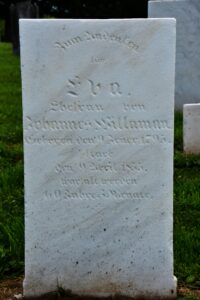![]() In May we headed to Eastern Pennsylvania for a second round of Willaman family research, visiting the places that we missed or did not find the first time that we visited.
In May we headed to Eastern Pennsylvania for a second round of Willaman family research, visiting the places that we missed or did not find the first time that we visited.
The places that we wanted to visit in that part of the state were all rather close together, and centered in an area not far from Lancaster. We always enjoy that part of Pennsylvania because the Amish are a part of the rural towns, and horse-drawn farm equipment, buggies and pedal-free bicycles share the roads with modern machinery and vehicles.
We stayed in a small RV park, in Ronks, a small town where there is an Amish farm with great produce at a good price a block away. Across the street from the RV Park, two houses shared a wide driveway leading to their respective garages. The garage on the left stored a car and the garage on the right stored a horse and buggy. We loved the sound and sight of the beautiful horses, stepping out smartly, delivering their passengers to their destinations.
In Lancaster, we found the building which once housed a cigar box factory, and the home, of my great-uncle, Henry Krauskopf. It is the oldest existing cigar box factory, built in 1874,
and now houses a barbershop on the main floor.
Our next explorations centered around my Great Grandfather, Aaron Gobble (AEG), and a bit of my Grandmother. When we last visited Pennsylvania, we went to New Berlin, where my Grandmother was born and where AEG taught at Union Seminary, before moving to Myerstown. My Great-Grandparents, Great-Uncle and Grandparents are all buried in New Berlin, where a family plot was purchased when my Great-Uncle died as an infant before my Grandmother was born.
Union Seminary merged with Central Pennsylvania College, in Myerstown, and that is where the family moved next. My Grandmother graduated from High School and Central Pennsylvania College there, and also taught there for a year or two after she graduated.
I found the address of the home where they lived, just a couple of blocks from the school. The street has changed from a quiet small-town avenue to a busy highway with large trucks rumbling by each day, coming to and from a nearby factory.
The home looks much the same as it did in the old pictures that I found, and is still in pretty good shape, just a big overgrown.
I had contacted the college prior to visiting and we were met by a woman who works there and who kindly showed us all around. It is currently owned by a church and is a seminary, teaching many of the military chaplains. The lady who showed us around is the wife of the minister of the church.
The inside of the building has changed quite a bit and the outside entrance was moved when the highway was expanded, but it was fun to walk around the inside and outside, and compare the school to old photos.
We even found some old scrapbooks that had photos of AEG, in what appears to be pictures of the teaching staff. 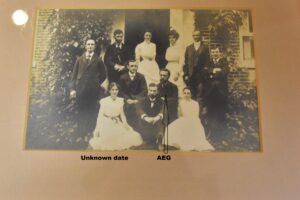
We could easily see their home from the college.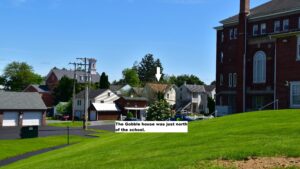
Central Pennsylvania College eventually merged with Albright College and it appears that AEG continued teaching in Myerstown until his death in 1929, which is the same year that the college moved to Reading. He passed away in Myerstown.
We checked out the Reading campus because a portrait of AEG was hung in the library in Reading in the 1930’s and Uncle Nic (John) remembers attending the unveiling with Grandmother and Mom. I don’t know that AEG ever taught there, but perhaps he did as it is not too far from Myerstown.
The Albright campus is quite lovely, fairly small and set on some hills above town.
The library had been completely gutted and was in the process of a major remodel when we were there, so we had no way to determine if AEG’s portrait was still hanging there before the construction began, or if it will be returned to the library. We were given a tour of the campus by a young man who was a student there, but, of course, he did not remember a portrait of a long-ago teacher which might have hung in the library.
A bit further west, toward the center of Pennsylvania, we revisited Heckman Cemetery, where my third Great-Grandparents are buried, and where there was a nice surprise waiting for us.
We first visited it in 2023, in search of their grave sites, but had no luck locating the headstones, even though we knew the row and site numbers of their headstones. Many of the headstones were covered in grime, broken, tipped over, etc., making it hard to determine what was a row and what was a grave site.
I later did some more research and found a photo of my 3rd Great-Grandmother’s grave on the Find A Grave website. Armed with that picture, I figured I could find it, so we decided to try the search again.
I was able to contact the manager of the cemetery beforehand, who informed me that there is not a map of the grave sites, so there was no help there. He also mentioned that the cemetery association was hiring a company to clean-up the grave sites, completing small sections each year.
He was not kidding about the clean-up project; the change is remarkable in the areas that have been refurbished.
To our good fortune, the area that was cleaned contained the headstones we were seeking. Within a few minutes, I found Eva Willaman, and then Johannes Willaman was easy to find by looking for his date of death. All the burials were by death date, there were no family plots in the early days at this cemetery.
The gravestone inscriptions are in German, or Pennsylvania Dutch, or some variant of those. By using Google, I was able to translate a few words and phrases. The words do not have a literal translation; the phrases seem to be a form of German that had been changed a bit in America. Does anyone know Old German words?
What I found so interesting is that Johannes, who died after Sarah, had changed the spelling of his name. I know it is him by his birth and death date, but the name appears to be Johanes Wilaman. His gravestone is harder to read than hers.
Both have the phrase “war alt wurden”, which I believe is something like “lived to an advanced age”.
The phrase at the top of each stone looks something like ‘Zum Hudretru’ which could mean ‘one hundred times faithful’.
I can translate:
Eva
Wife of Johannes Willaman
Born on 9 January 1795
(word for died perhaps)
The 9 April 1855
![]()
![]()
The lines I can translate:
‘Born on the 12th of April 1778’
‘The 6 September 1889’
The family research was fun, and then we were on the road again, finding more adventures during our travel westward, to Montana.

